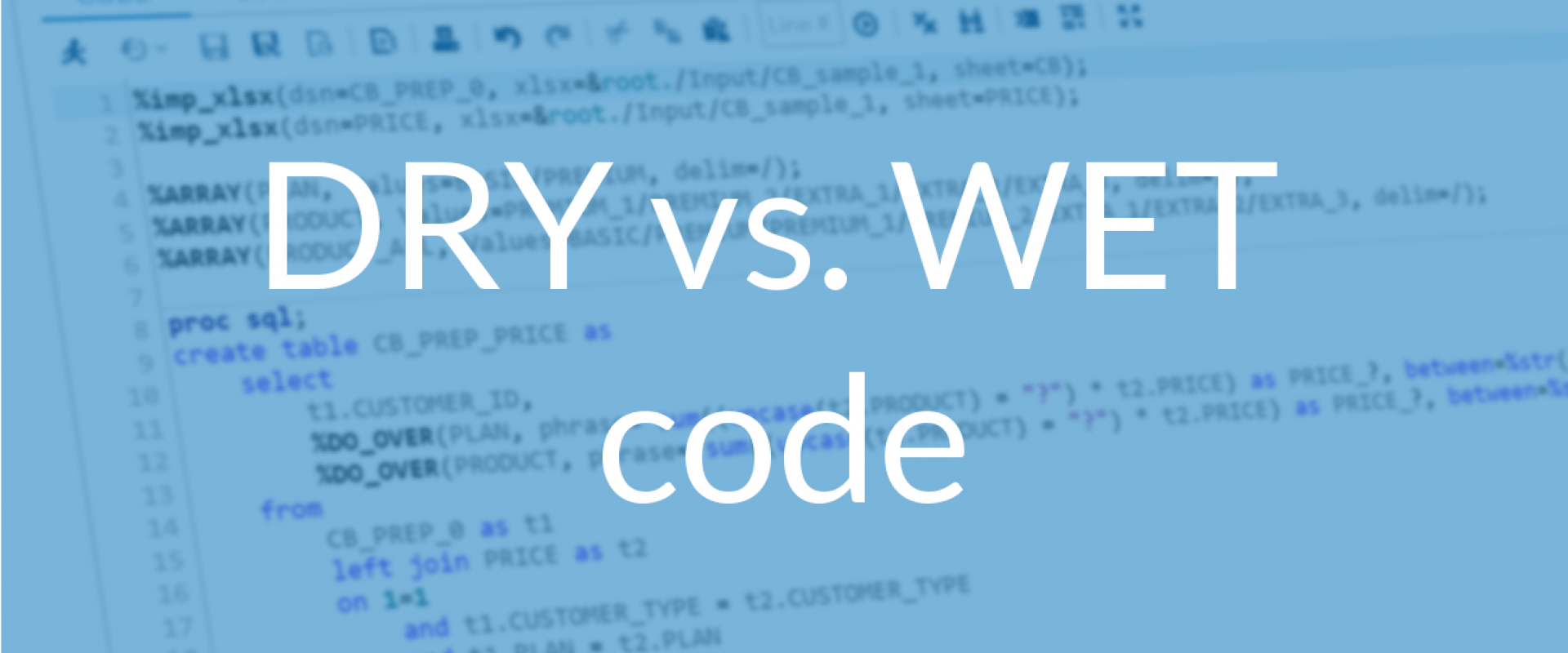Is Your Code DRY or WET?

The main tenets of "Don't Repeat Yourself," a methodology to save time and money while also making it easier to maintain and test code.
DRY code is a software principle that stands for Don’t Repeat Yourself (DRY), where the goal is to reduce the repetition of code.
Write Everything Twice (WET) is a cheeky abbreviation to mean the opposite i.e. code that doesn’t adhere to DRY principle.
It is quite obvious which one of the two should all developers be aiming for. But hey!, someone out there might be proving me wrong at this very moment.
In this post, we look at the benefits of applying DRY principle to your code. Firstly, we will start with a simple example that illustrates the basic advantage of the DRY principle.
DRY — Simple example
Assume you have many places in your code that need to be executed based on the current user’s role. For instance, createPage() can only be executed if the user is an editor or an administrator, deletePage() only if the user is an administrator, etc.
Instead of spreading the logic of checking for a user’s role in both createPage and deletePage, we could use a single function isPermitted() as below.
//get
the current Subject
Subject currentUser = context.getSubject();
if (isPermitted(currentUser)) {
//allow execution of deletePage
} else {
//block execution
}
By keeping the logic of isPermitted() to one place, you avoid duplication and also enable re-use of the code. The added advantage is separation of logic i.e. createPage() and deletePage() don’t need to know how the permission is checked.
As always there is more than meets the eye.
Advantages of DRY
Maintainability
The biggest benefit of using DRY is maintainability. If the logic of checking permissions was repeated all over the code, it becomes difficult to fix issues that arise in the repeated code. When you fix a problem in one, you could easily forget to fix the problem in other occurrences. Also, if you have to modify the logic, you have to copy-paste all over the place. By having non-repeated code, you only have to maintain the code in a single place. New logic and bug fixes can be made in one place instead of many. This leads to robust and dependable software.
Readability
More often than not, DRY code is more readable. This is not because of the DRY principle itself, but rather because of the extra effort the developer put into the code to make it follow certain principles such as DRY.
Reuse
DRY inherently promotes reuse of code because we are merging 2 or more instances of repeating code into a single block of code. Reusable code pays of in the long run as it speeds up development time.
Cost
If management needs to be convinced to spend more time on improving the quality of code, this is it. More code costs more. More code takes more people more time to maintain and to address bugs. More time to develop and more bugs leads to a very unhappy customer. Enough said!
Testing
We are talking about unit tests and integration tests here, not manual testing. The more paths and functions you have to cover using the tests, the more code you have to write for tests. If code is not repeated, you just have to test one main path. Of course, different behaviors still need to be tested.
Caution
With all the advantages of using DRY, there are some pitfalls though.
1. Not all code needs to be merged into one piece. Some times 2 pieces of code can look similar but with subtle differences. When to merge these prices of code into one and when to leave them separated needs to be thought over carefully.
2. If the code is “over dried”, it becomes difficult to read and understand. I have also seen developers trying to apply DRY principles even when there is only one instance of a block of code. While I appreciate their thinking and foresight into making the code better and reusable, I wouldn’t bother to make the code follow DRY principle until the situation to re-use it is needed.
3. Often missed, DRY is not to be limited to just the code. It is to be applied in equal measure to database design, documentation, testing code etc.
We Provide consulting, implementation, and management services on DevOps, DevSecOps, Cloud, Automated Ops, Microservices, Infrastructure, and Security
Services offered by us: https://www.zippyops.com/services
Our Products: https://www.zippyops.com/products
Our Solutions: https://www.zippyops.com/solutions
For Demo, videos check out YouTube Playlist: https://www.youtube.com/watch?v=4FYvPooN_Tg&list=PLCJ3JpanNyCfXlHahZhYgJH9-rV6ouPro
If this seems interesting, please email us at [email protected] for a call.
Relevant blogs:
5 Options for Deploying Microservices
Release Management for Microservices: Multi vs. Monorepos
CIO Guide for Operational and Business Benefits of DevOps
Recent Comments
No comments
Leave a Comment
We will be happy to hear what you think about this post